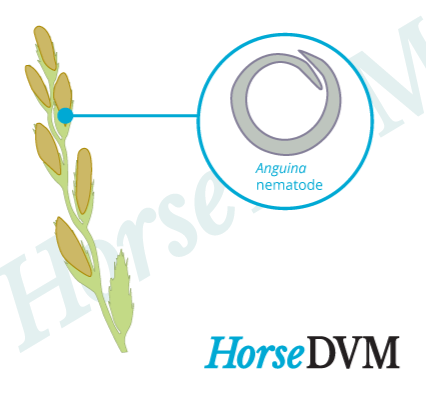Annual ryegrass (
Lolium multiflorum) is an annual, biennial, or perennial cool-season bunchgrass that is native to temperature Europe.
L. multiflorum has been introduced throughout the temperate regions of the world as an agricultural species. It is used as a common turf grass in the southern United States
Annual Ryegrass Identifying Characteristics
- Height: 3 ft (0.914 m)
- Flowers: Spiked seedheads, 4 to 16 inches (10 to 40 cm) in length.
- Leaves: 2.5 to 8 inch (6 to 20 cm) leaf blades with a membranous ligule; lower surfaces are usually glossy. Rolled in the buf with conspicuous claw-like auricles.
- Stems: Reddish sheaths at the base.
- Root system: Fibrous
Toxic components
In Australia and South Africa, there has been 26 poisoning cases of horses grazing on or fed hay contaminated with
L. multiflorum. The outcome was fatal in 92% of affected horses.
L. multiflorum can sometimes become infected with the bacterium
Rathayibacter toxicus which produces corynetoxins. Corynetoxins are glycolipid toxins known to cause the neurological disease, annual ryegrass toxicity (ARGT) in livestock. Most poisoning cases occur during the late spring to early summer, which is the end of the flowering period of the grass. Once ingested, corynetoxins damage the small blood vessels in the brain which can limit the supply of oxygen to parts of the brain. They also inhibit an important enzyme which disrupts several metabolic processes in the horse.
